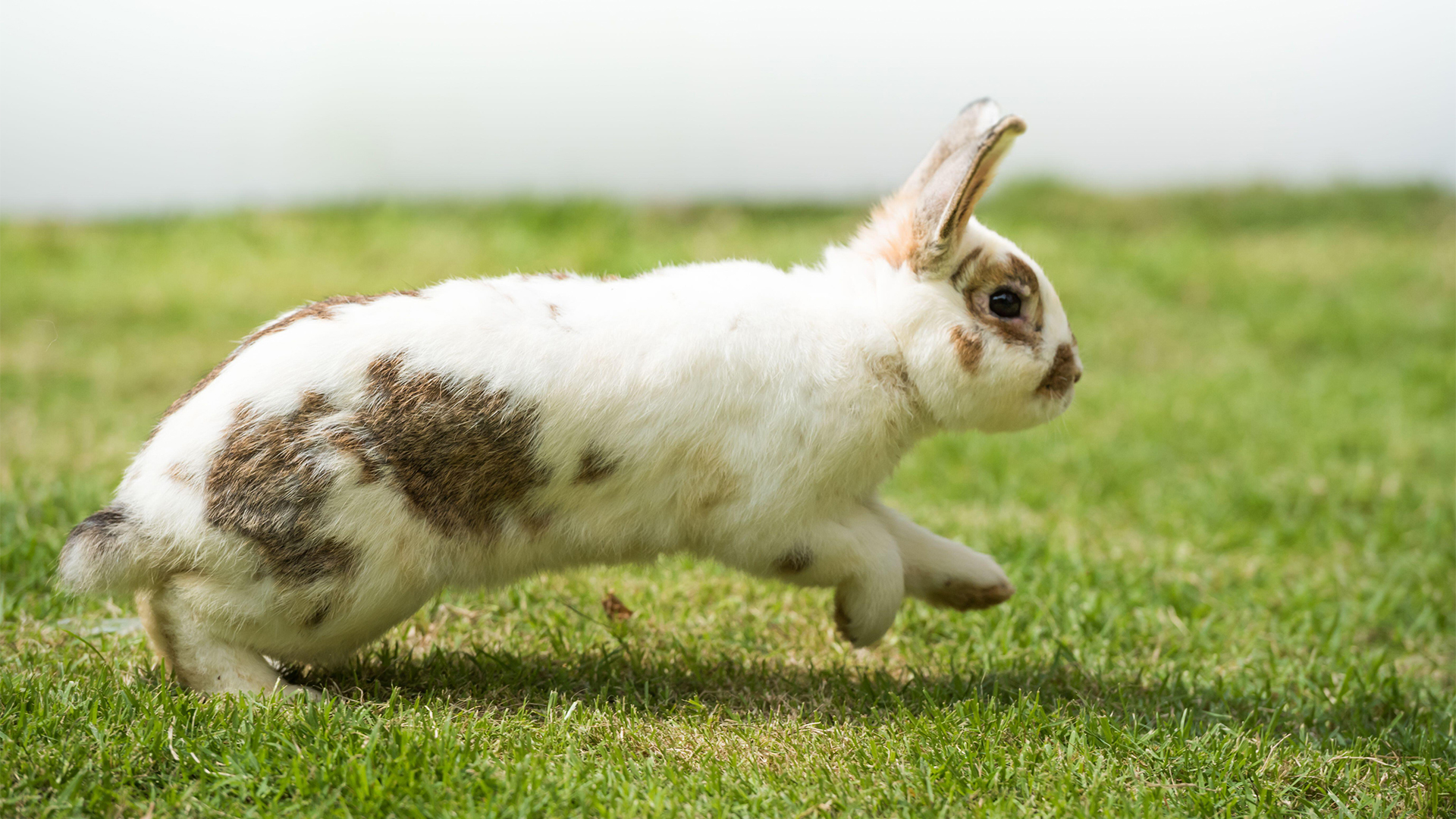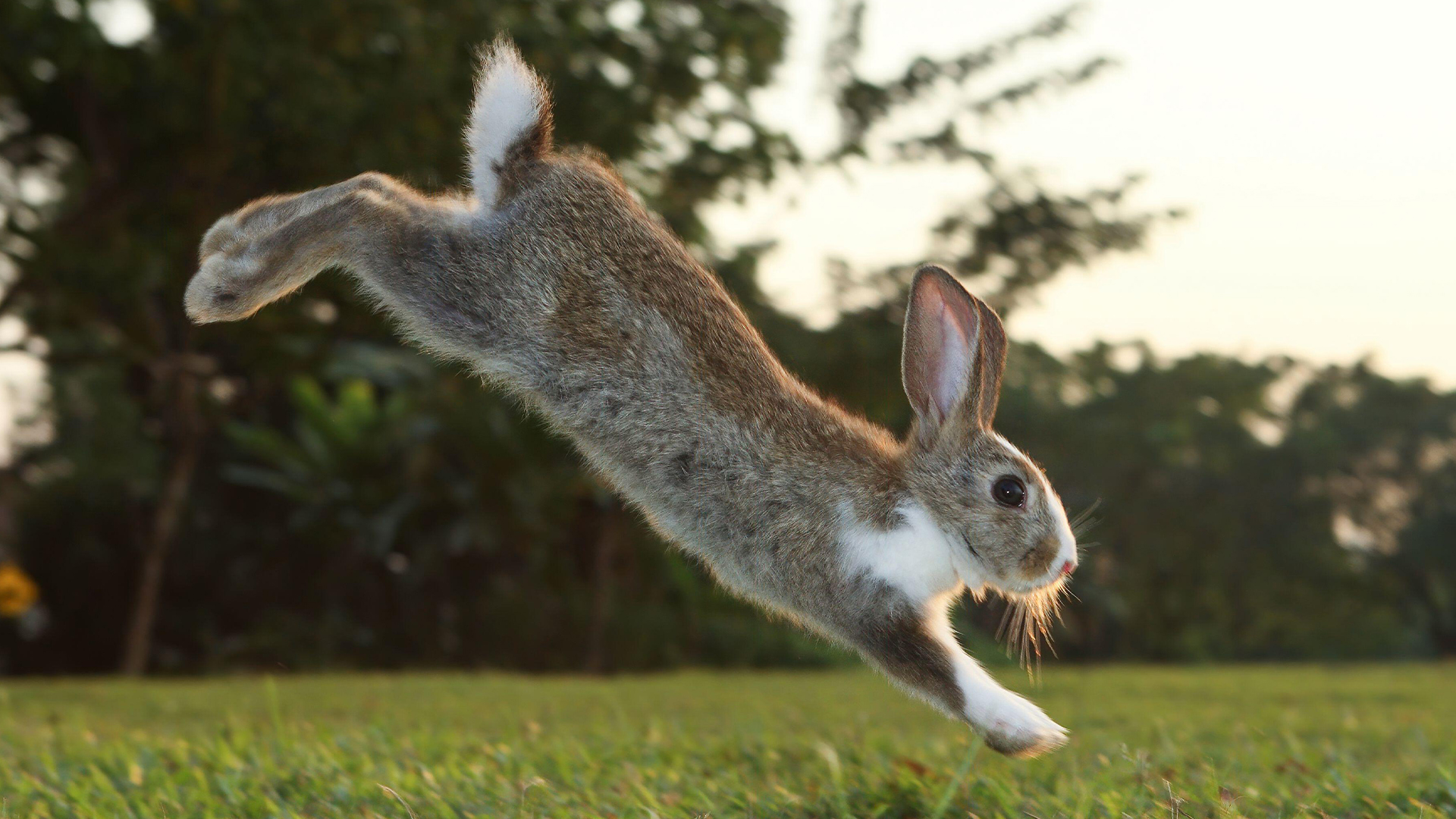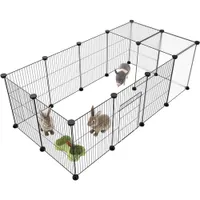How much space does a rabbit need?
Rabbits need more space than you think, so we asked Dr Rebecca McMillan exactly how much space does a rabbit need – and it’s more than you might think

If you’re researching rabbits, you might be wondering how much space they need. It might be more than you think! Despite their small size, bunnies actually need a fair amount so they can hop, run and binky their days away.
Taking them for a short walk on one of the best rabbit harnesses is a nice addition (if your bunny is happy with it) but unfortunately it just isn’t enough – really they need one of the best indoor rabbit hutches or best outdoor rabbit hutches to provide them with enough daily living space.
To find out exactly how much space a rabbit needs, we spoke with vet Dr Rebecca MacMillan…
How much space does a rabbit need?
To simply answer the question “How much space does a rabbit need?”, the Rabbit Welfare Association & Fund (RWAF) recommends that all rabbits, those living indoors and outdoors, should have a single enclosed area of at least 3m x 2m (10ft x 6.5ft), and it should be at least 1m (3ft) high. This footprint can include the sleeping area, which itself should be a minimum of 1.8m x 0.6m (6ft x 2ft), and at least 0.6m (2ft) high.
It's important that rabbits have access to this amount of space at all times, not just for limited periods. RWAF also stresses the importance of this being one block of space, as this allows rabbits to engage in their natural behaviors like running, as opposed to just hopping.
Dr MacMillan agreed with the enclosure size recommended by RWAF, adding: “It is advised to have their smaller, cozy sleeping area (e.g. a hutch) permanently attached to an exercising area so that your rabbit can move between the areas as they wish.”
And of course, it goes without saying that these sizing guidelines are a minimum to aim for.
Get the best advice, tips and top tech for your beloved Pets
This X-pen tops our list in our guide to the best indoor rabbit hutches, but you can use one as an exercise area too. There are loads of ways to set them up and they’re an inexpensive option.
“I always advise rabbit owners to give their pets as much space as they possibly can. It is important to recognize that the measurements provided are a basic minimum, and if you can give your rabbit more space then you should,” she added. “This applies to both indoor and outdoor rabbits. Remember the saying – ‘a hutch is never enough’.”
You should also take into account the size of your rabbit, as different breeds vary tremendously. For example, a Flemish Giant is going to need more space to frolic than a teeny Netherland Dwarf. When researching the indoor rabbit hutches, you'll also want to select one big enough for the full grown adult size of your rabbit.
There are lots of different ways to meet your rabbit’s housing and space requirements, but it is important to note that any upper floor space – such as that seen in two-storey indoor or outdoor rabbit hutches – does not count towards the overall footprint. The same applies to additional enrichment areas, such as tunnels or raised platforms. These are nice extras for your bunny (and great for enrichment) but cannot count towards the space requirements.
While you may choose to purchase one of the best rabbit runs for your indoor bunnies to safely explore outside, it’s important to note that these also don’t count toward the minimum space requirement that your rabbit's primary enclosure needs to meet.

Do rabbits need extra space in addition to their enclosure?
These enclosure measurements are the bare minimum a rabbit needs, and in addition to their main enclosure they should ideally have access to a larger exercise space too.
We’d suggest providing your bunny with an additional 24 square feet of exercise space – but again the bigger the better. For indoor bunnies, this could mean rabbit proofing one room of your home and allowing them access for exercise. In a perfect world, they would have access to this area all the time, but at least five hours a day as a minimum.
Dr MacMillan suggests that one way to provide your rabbits with even more space is to set up an enclosure and tunnel system.
“There is plenty of inspiration online, but some dedicated rabbit owners construct interconnecting sheds, aviaries, and runs with tunnels designed specifically for this purpose. This helps to build a warren-like environment and can help to increase the amount of overall area that your rabbits have.”
The best puppy plan pens are also handy if you need a quick way to rabbit-proof a room in your home.
Why do rabbits need this much space?
If you're used to seeing pet rabbits kept in hutches, the suggested sizes might seem positively palatial to you. Especially considering the size of the average rabbit! But it's vital to the health of your rabbit that they have enough space.
Dr MacMillan explains that in the wild, rabbits would have endless space to roam and build burrows in.
“The more floor area given to your pet rabbit, the more opportunities it has to display natural behaviors, like foraging, running, and jumping (and binkying!),” says Dr MacMillan. “Pet rabbits must have more than enough space to stretch, stand up on their hind legs, and hop around in. Any less than this can severely impact their health and wellbeing.”

What happens if a rabbit doesn’t have access to enough space?
Rabbits that don’t have enough space can be negatively affected both physically and emotionally.
“Without enough room to move about and exercise in, your rabbit could suffer from obesity as well as issues with the strength of their bones and muscles,” says Dr MacMillan.
But it’s not just their bodies that will suffer from limited space.
“Being cooped up in a tiny area and unable to carry out natural behaviors is also not good for the mental health of any creature. It can lead to behavioral issues such as depression, anxiety, or aggression. Your rabbit may take out their frustrations on themselves through overgrooming or could become destructive in their enclosure,” she adds.
If you’re interested in getting a pet, it’s no surprise we think rabbits are a fantastic choice. They’re playful, cute and full of personality! But before you rush out to your local rabbit rescue, it’s worth making sure you’ve got the space to offer your new bunnies the environment they need to thrive.

Rebecca is a vet surgeon who graduated from the Royal Veterinary College in 2009. She has a wealth of experience in first opinion small animal practice, having done a mixture of day-to-day routine work, on-call emergency duties and managerial roles over the years. She enjoys medicine in particular and she is proud to have recently achieved a BSAVA postgraduate certificate in small animal medicine (with commendation). She writes on various feline and canine topics, including behavior, nutrition, and health. Outside of work and writing she enjoys walking her own dog, spending time with her young family and baking!

Abby is a freelance writer and dog owner. She currently has two golden retrievers, Lowen and and Indy, but has previously had many other pets, including rabbits.
Abby has written for Metro, House Beautiful, Fit+Well, and more. Alongside this, Abby also volunteers at a local dog rescue centre, helping out with daily activities, such as walking, feeding and grooming.
- Dr. Rebecca MacMillanVet
- Georgia GuerinEditor

